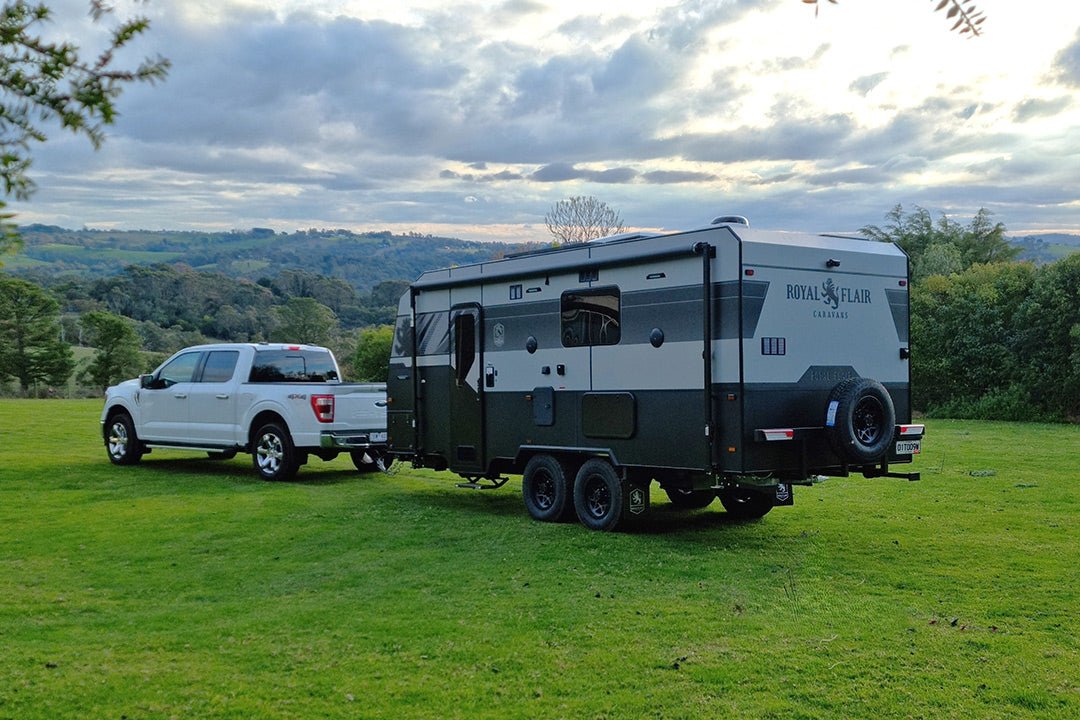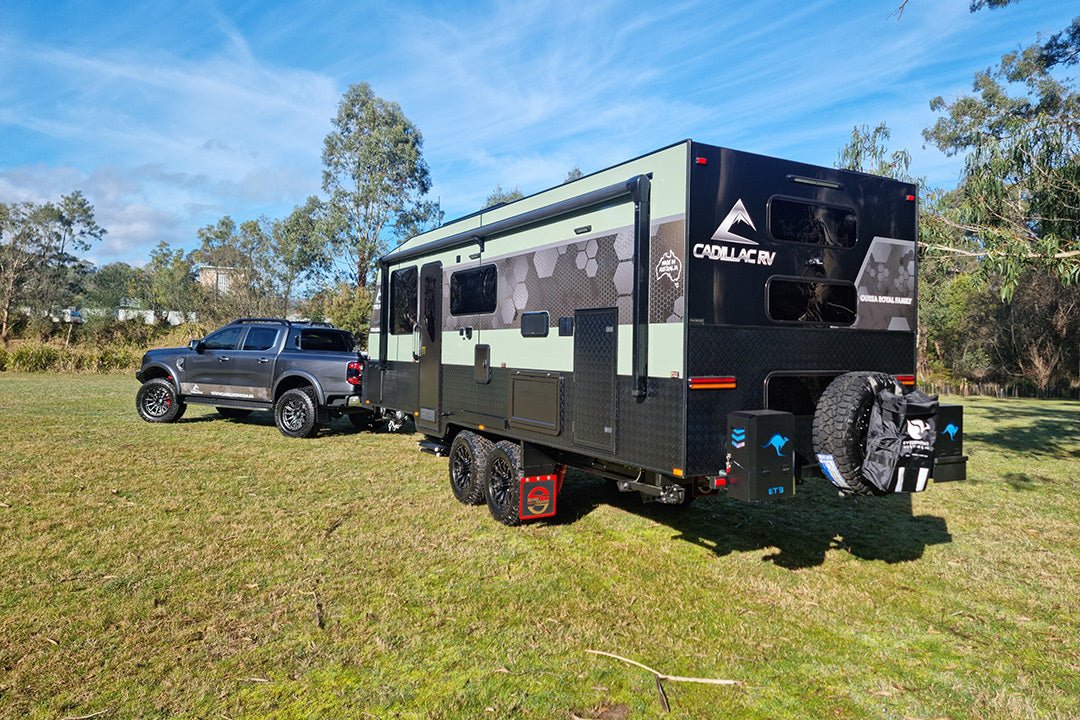The Flinders Highway

MT ISA TO CLONCURRY (120KM)
Between Mt Isa and Cloncurry, the eastern section of the Barkly Highway snakes through the spectacular Selwyn Range. This dramatic landscape of buckled ridges and valleys provides one of the most scenic drives along the Overlanders Way.
These are the traditional lands of the Kalkadoon Indigenous people, a proud tribe who waged a fierce guerrilla campaign against European pastoralists for many years. This conflict culminated in a pitched battle with paramilitary forces in September 1884, which claimed the lives of more than 200 Indigenous warriors.
The first Europeans to pass through these lands were Burke and Wills, who crossed and named the Cloncurry River in January 1861. The town that later grew at the crossing took its name from the river.
Prospector Ernest Henry discovered copper in the area in 1867 and established the Great Australian Mine, which helped make Cloncurry the largest copper producer in the British Empire. Later, entrepreneurs diverted their interests into beef cattle, which remains the region’s principal industry.
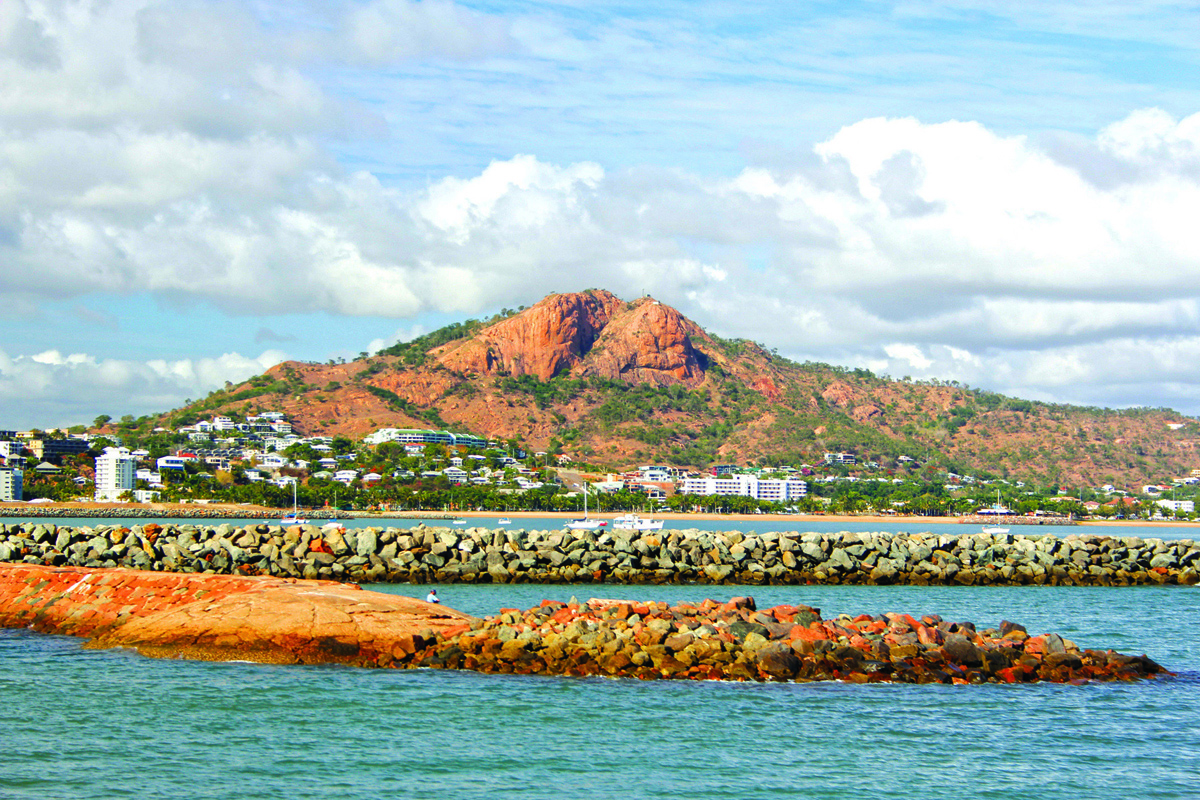 Castle Hill is a stunning backdrop to Townsville's city centre
Castle Hill is a stunning backdrop to Townsville's city centre
Always an important transportation hub in the region, Cloncurry is famous for its links with aviation. In 1922, the town received the first scheduled Qantas passenger service from Longreach and, six years later, John Flynn established the first Flying Doctor base at Cloncurry airport.
Cloncurry’s fascinating and varied history is displayed at the John Flynn Place Museum and Art Gallery, the Cloncurry Unearthed Museum and the Mary Kathleen Memorial Park, while its outback traditions are celebrated in the annual Cloncurry Stockman’s Challenge and Campdraft, the Curry Merry Muster and Curry Day.
There is ample tourist accommodation in the town, including the Cloncurry Caravan Park and Discovery Holiday Park, both on McIlwraith St (Flinders Highway).
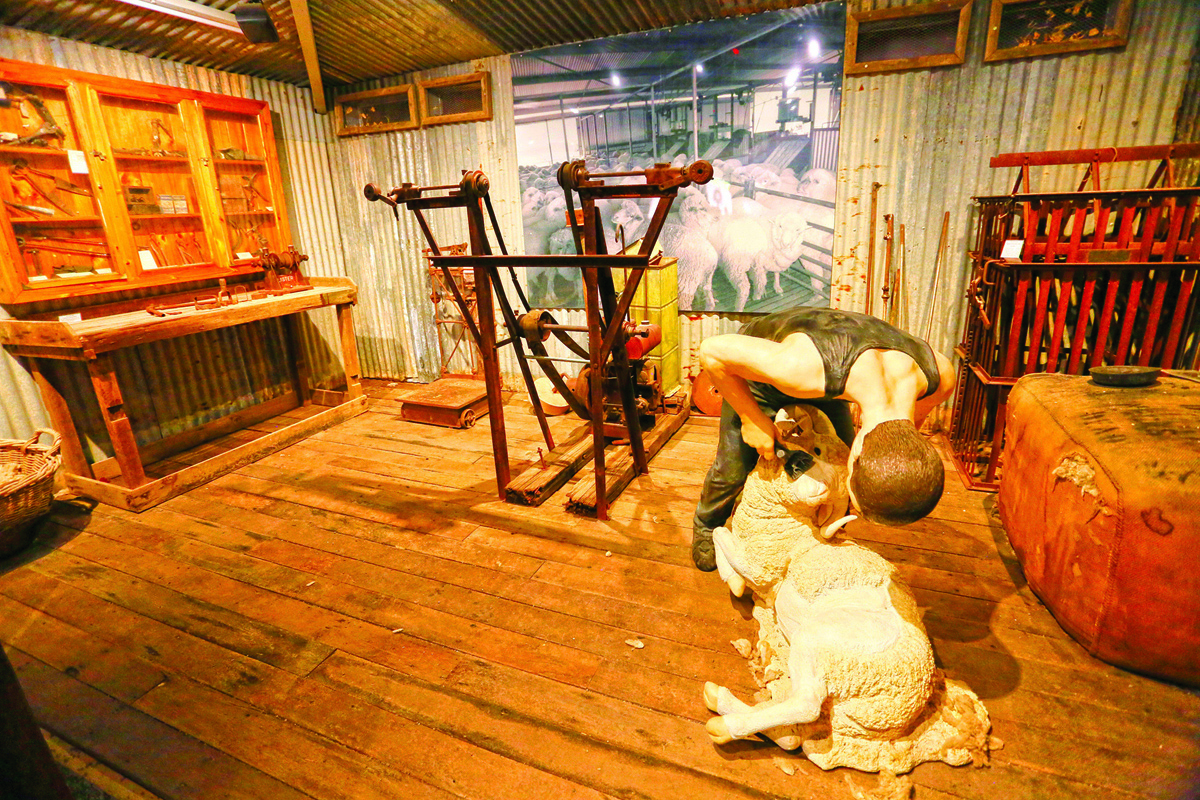 Pastoral at the Flinders Discovery Centre, Hughendon
Pastoral at the Flinders Discovery Centre, Hughendon
CLONCURRY TO JULIA CREEK (138km)
From Cloncurry, the Overlanders Way continues eastward as the Flinders Highway (A6) all the way to Townsville. Originally named Scorpion, Julia Creek was the first European settlement in north-western Queensland. In 1870, it adopted its present name from the eponymous watercourse, which flows north-west through the town into the Cloncurry River. The creek is thought to be named after Julia Campbell, niece of Donald McIntyre who was the first European settler in the area in 1862.
Julia Creek began life as a Cobb & Co coach exchange depot. After the arrival of the railway in 1907, the town developed into a major transport hub and regional centre for surrounding sheep and cattle stations, supplanting McKinlay as the shire’s administrative headquarters in 1932.
The town's excellent ‘At the Creek’ Visitor Centre is housed in historic railway fettler's cottages on Burke Street. It has a number of impressive displays showcasing the district’s history and a purpose-built enclosure for ‘Digby’, a rare and endangered Julia Creek dunnart. The town also hosts the annual Dirt n Dust Festival, considered to be one of Queensland's major regional sporting events. Caravanners are well catered for at the Julia Creek Caravan Park and the free camp by the creek on the town’s eastern outskirts.
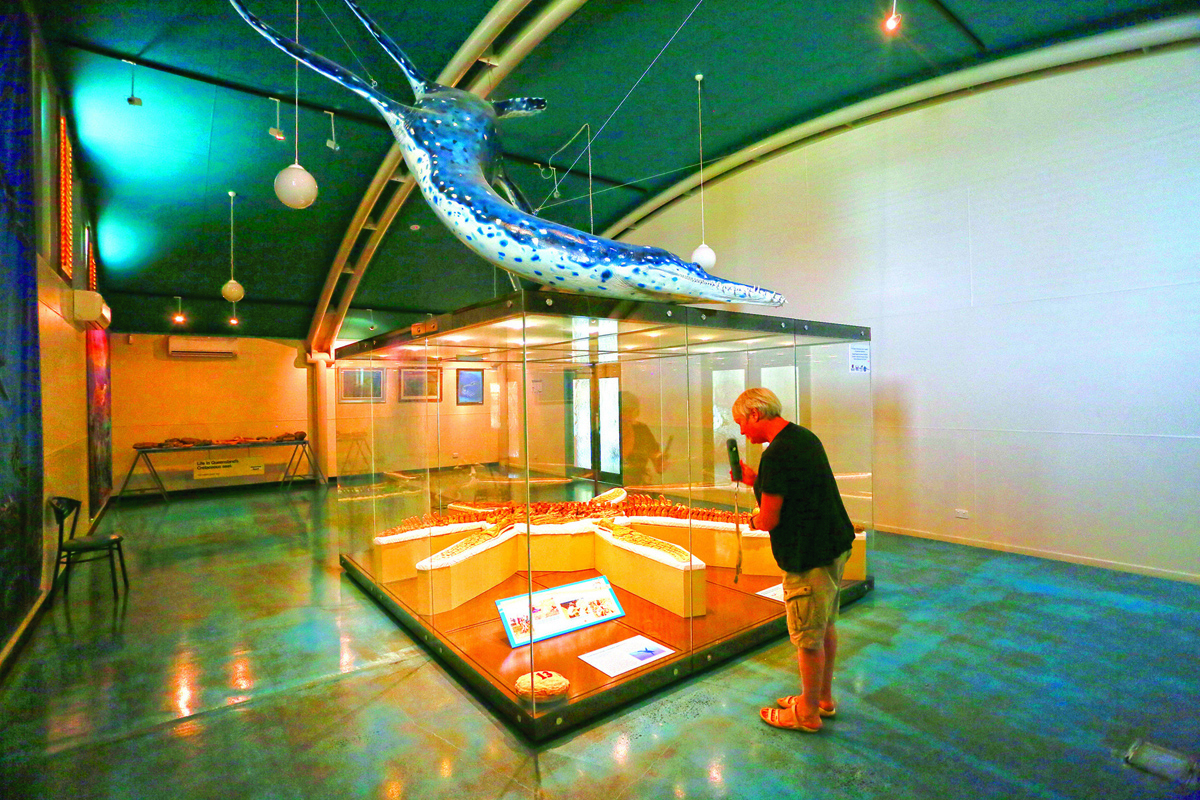 A display at Kronosaurus Korner in Richmond
A display at Kronosaurus Korner in Richmond
JULIA CREEK TO RICHMOND (148KM)
Richmond lies adjacent to Queensland's longest river, the Flinders, which flows more than 1000km across a vast, flat catchment to the Gulf of Carpentaria, near Karumba. Burke, Wills and Gray reached the river delta in 1861, to complete their transcontinental crossing from south to north.
A year later, William Landsborough explored the region while searching for the ill-fated expedition. His glowing reports of the country’s grazing quality attracted many pastoralists, including Arthur Bundock and Walter Hayes who established the Richmond Downs pastoral run on the Flinders in 1864. A settlement grew up at the river crossing and became an important transit point for Cobb & Co coaches ferrying miners north to the Woolgar goldfields during the 1880s.
Today, Richmond is the administrative and service centre of a sprawling, sparsely populated shire, in which the primary land uses are grazing and agriculture. Tourism also plays an important role in the local economy, centred on 'Kronosaurus Korner', which justly claims to be the best marine fossil museum in Australia. Its collection includes some impressive specimens, such as the skeleton of a of a 100-million-year-old Pliosaur; the remains of Kronosaurus queenslandicus, a predatory marine reptile; a 7m Plesiosaur (Woolungasaurus); and an equally long shark-like Ichthyosaur.
Richmond’s other attractions include a heritage walk along Goldring Street that visits 21 historic places of interest and Lake Fred Tritton, an excellent venue for aquatic sports, fishing and picnics. The Lakeview Caravan Park provides a range of accommodation for travellers overlooking the water park.
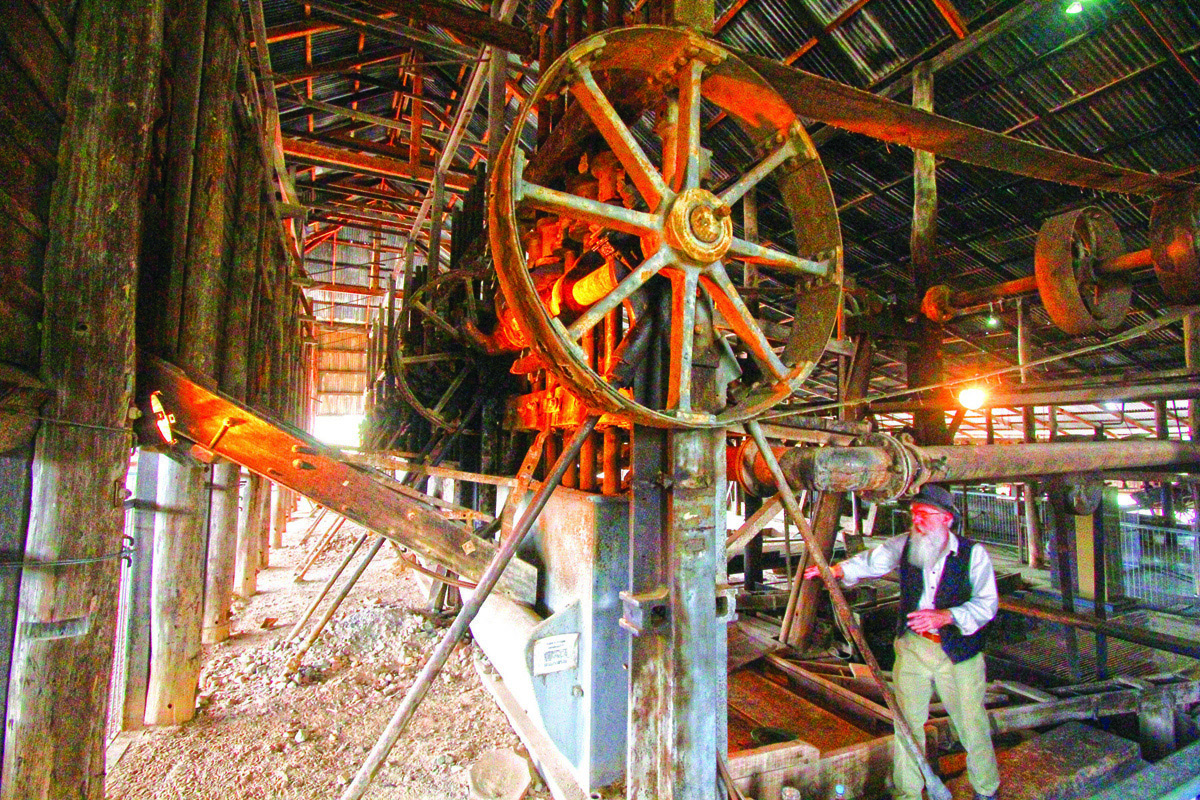 Inside the Venus Battery (1872) at Charters Tower
Inside the Venus Battery (1872) at Charters Tower
RICHMOND TO HUGHENDEN (114KM)
Hughenden also stands on the banks of the Flinders River and is a major centre for local sheep and cattle stations on the surrounding black soil plains. These semi-arid expanses are the traditional country of the Yirandhali Indigenous people, who occupied them for about 11,000 years before white settlement.
The first Europeans in the area were from expeditions led by William Landsborough and Frederick Walker in 1861–62 looking for Burke and Wills. They reported favourably on the pastoral prospects around the Flinders River and within a year, Ernest Henry settled in the area, naming his sheep station ‘Hughenden’ after his ancestral home in England.
The town of Hughenden began in 1870 as an outpost for the paramilitary Native Police at the junction of Station Creek and the Flinders River. In 1877, the township was surveyed at the site and took the name of Henry's pastoral station. The town prospered on the back of its pastoral industry during the 1880s and ‘90s, and later developed as the region’s service and commercial centre.
The town is renowned for its Flinders Discovery Centre, where the star attraction is ‘Hughie’, a life-size replica of a Muttaburrasaurus skeleton — the first entire dinosaur fossil to be found in Australia. A full-bodied replica (‘Mutt’) stands outside the heritage-listed Grand Hotel. Hughenden’s CBD is also adorned with a number of dinosaur-themed sculptures by local artists.
The town hosts several annual events, including the Dinosaur Festival, the Hughenden Country Music Festival, and the Bullride and Race Day. Tourists will find a range of accommodation at the spacious Hughenden Allen Terry Caravan Park.
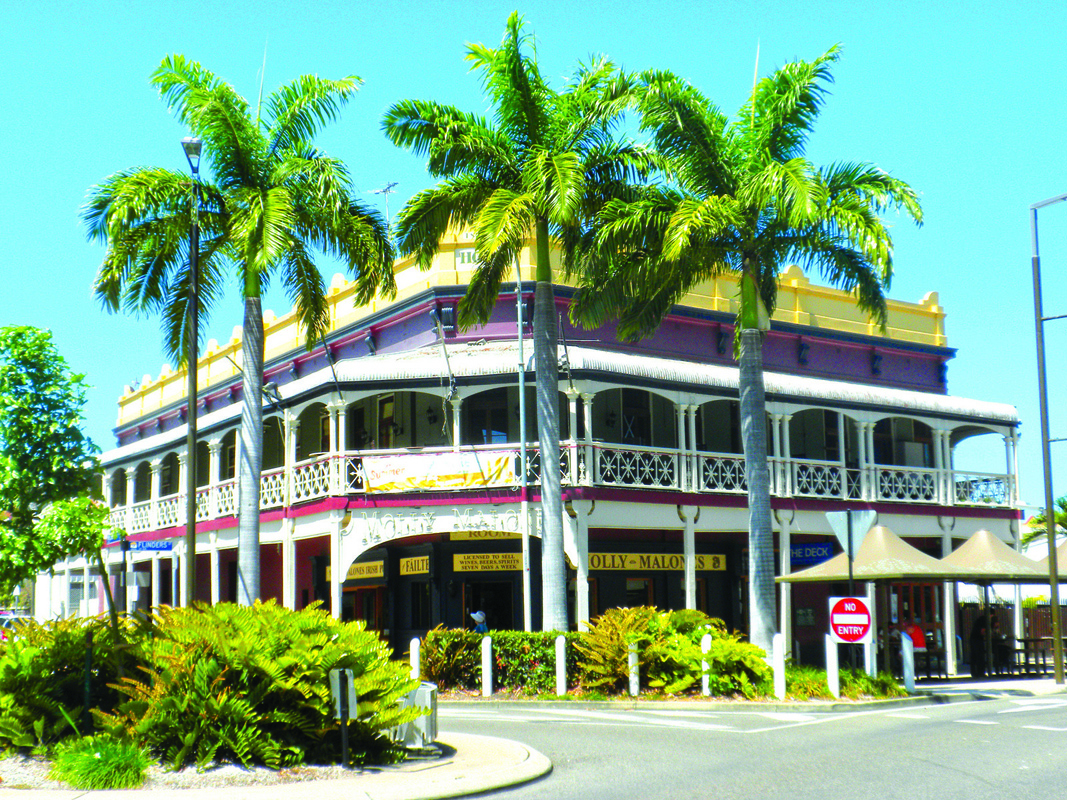 Townsville CBD has many beautiful buildings from its golden age
Townsville CBD has many beautiful buildings from its golden age
HUGHENDEN TO CHARTERS TOWERS (246KM)
It is said of Charters Towers that this ‘City of Gold’ was born in a violent thunderstorm. On Christmas Eve 1871, a small prospecting party led by Hugh Mosman was camped near a cluster of hills when the storm broke around them, startling their horses which bolted panic-stricken into the darkness. While searching for the horses next morning, their 12-year-old Indigenous camp boy, Jupiter, found a gold nugget glittering in a shallow creek at the base of the hills.
This lucky find triggered a stampede of miners that revealed Charters Towers as one of Australia’s richest goldfields. Up to 1917, hundreds of mines collectively produced more than 200 tonnes of gold, yielding dividends to their investors estimated at $900 million (in current dollar value).
The town soon developed into a bustling metropolis and commercial centre that became known as ‘The World’, because (it was said) anything one might desire could be had in the Towers. In its heyday (1882–93), Charters Towers had a population of 30,000, making it the state’s largest city outside Brisbane, with a quality of life without equal in colonial Queensland.
The wealth generated by these lucrative mines flowed into civic improvements, palatial homes and public buildings of architectural splendour. Many of these elegant heritage-listed buildings still grace the city’s commercial district known as the ‘One Square Mile’, which is explored on the ‘Ghosts of Gold’ heritage walking trail.
Many other attractions further illuminate the city’s history — the Towers Hill precinct, the Venus Gold Battery, the Miner’s Cottage, the Zara Clark Museum, and the Stock Exchange Arcade and Mining Museum. A wide range of accommodation is available in the city and surrounding region, including caravan parks, hotels, motels, cabins and farm stays.
 The Selwyn Ranges are the Traditional Lands of the Kalkadoon Indigenous people
The Selwyn Ranges are the Traditional Lands of the Kalkadoon Indigenous people
CHARTERS TOWERS TO TOWNSVILLE (138KM)
After traversing a vast stretch of Outback, the Flinders Highway eventually arrives at Townsville on the shining Coral Sea. From humble origins as a frontier port on remote Cumberland Bay, Townsville has grown into the de facto ‘Capital of North Queensland’, a vibrant modern city and the commercial, industrial and cultural hub of one of Australia’s most productive regions.
While its tourism industry has flourished since the 1980s, capitalising on its proximity to the Great Barrier Reef, the city’s economy has never been dependent on tourism alone. Townsville hosts regional offices of many government and business organisations and is a major industrial centre with a busy commercial port shipping regional products interstate and overseas. Maintaining a strategic importance that evolved during World War II, Townsville is the base for several high-readiness Australian Amy units and a regular port of call for RAN amphibious assault ships.
As the northern centre for higher education and research, it is home to the James Cook University, headquarters of the Australian Institute of Marine Science and the Great Barrier Reef Marine Park Authority. It also hosts premier cultural attractions such as Reef HQ, the Museum of Tropical Queensland and Townsville Maritime Museum.
Despite its industrial and commercial trappings, Townsville is a city of great charm and style with a relaxed vibe that resonates in its elegant heritage-listed buildings, verdant botanical gardens and close proximity to Magnetic Island. The inner city stretches along The Strand, a 2km beach and parkland strip fronting Cleveland Bay, and is overlooked by the red granite monolith of Castle Hill (286m), from which several lookouts provide panoramic views of the city and Magnetic Island across the bay.
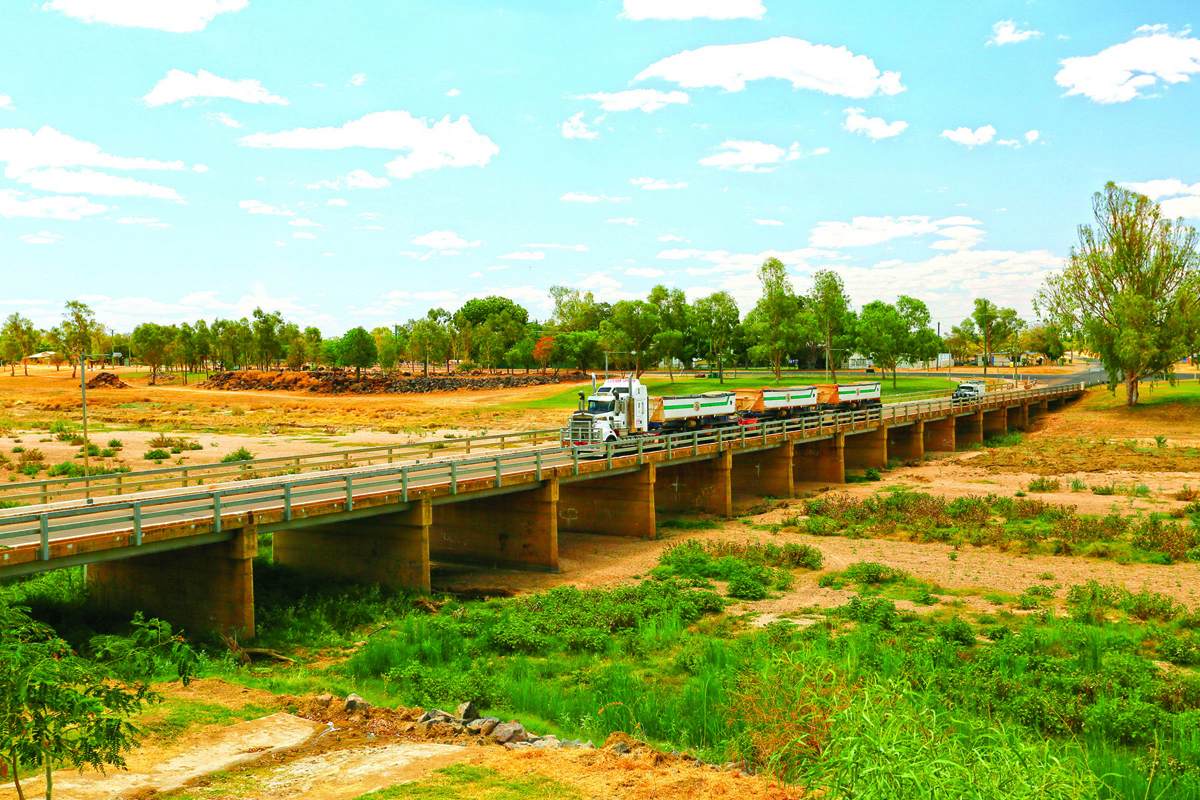 A road train crossing the Flinders River bridge, Hughendon
A road train crossing the Flinders River bridge, Hughendon
The historic heart of the city is the waterfront precinct of Flinders Street East, overlooking Ross Creek, where many gracious two-storey buildings bear witness to the town’s evolution from a provincial outpost to a pre-eminent place of commerce. Throughout the modern city, former colonial banks mingle with high-rise office blocks and hotels, and late-night revellers frequent old pubs that were once the social milieu of wharfies, railwaymen and meatworkers.
Travellers will find plenty of accommodation options to suit all lifestyles and budgets. There are several caravan parks in and around the city, the stand out being the BIG4 Rowes Bay Beachfront Holiday Park.
CONTACTS
CLONCURRY VISITOR INFORMATION CENTRE
McIlwraith Street (Flinders Highway)
P: (07) 4742 1361
E: info@cloncurry.qld.gov.au
W: cloncurry.qld.gov.au/discover/visitor-information-centre
JULIA CREEK VISITOR INFORMATION CENTRE
34 Burke Street
P: (07) 4746 7690.
W: atthecreek.com.au
RICHMOND VISITOR
INFORMATION CENTRE
Kronosaurus Korner, 91–93 Goldring Street
P: (07) 4741 3429
E: enquiries@kronosauruskorner.com.au
W: kronosauruskorner.com.au
FLINDERS DISCVOERY CENTRE
37 Grey Street, Hughenden
P: (07) 4741 2970
E: info@flinders.qld.gov.au
W: visithughenden.com.au
CHARTERS TOWERS VISITOR INFORMATION CENTRE
Charters Towers Visitor Information Centre
74 Mosman Street, Charters Towers P: (07) 4761 5533
E: tourinfo@charterstowers.qld.gov.au
W: visitcharterstowers.com.au
TOWNSVILLE VISITOR INFORMATION CENTRE
340 Flinders Street, Townsville
P: 1800 801 902
E: hello@ townsvillenorthqueensland.com.au
W: townsvillenorthqueensland.com.au






